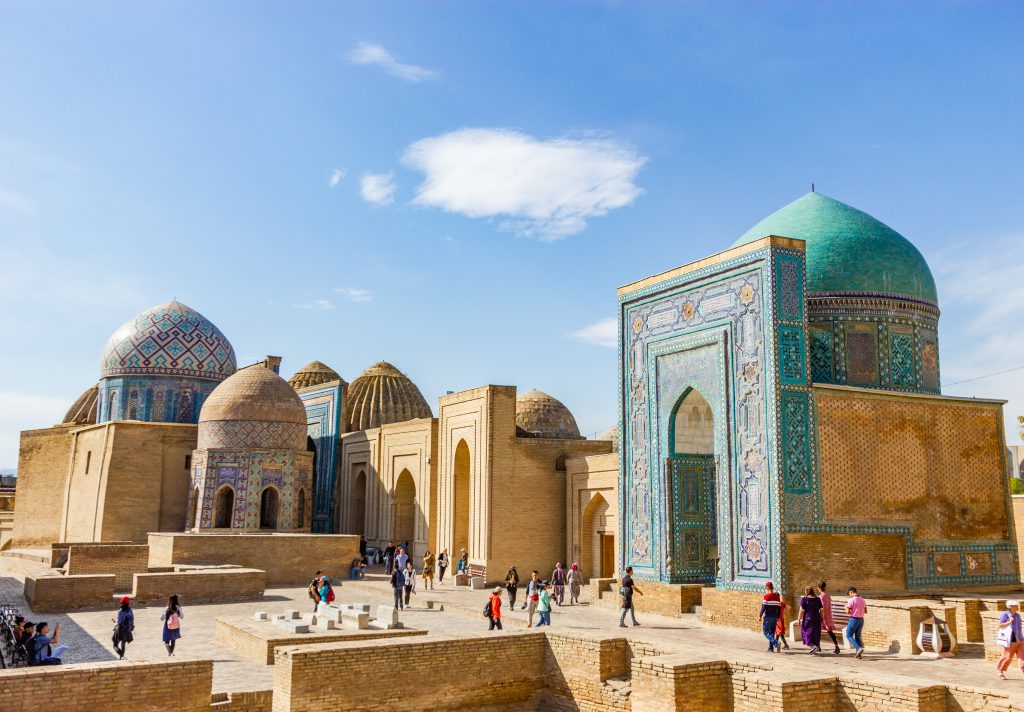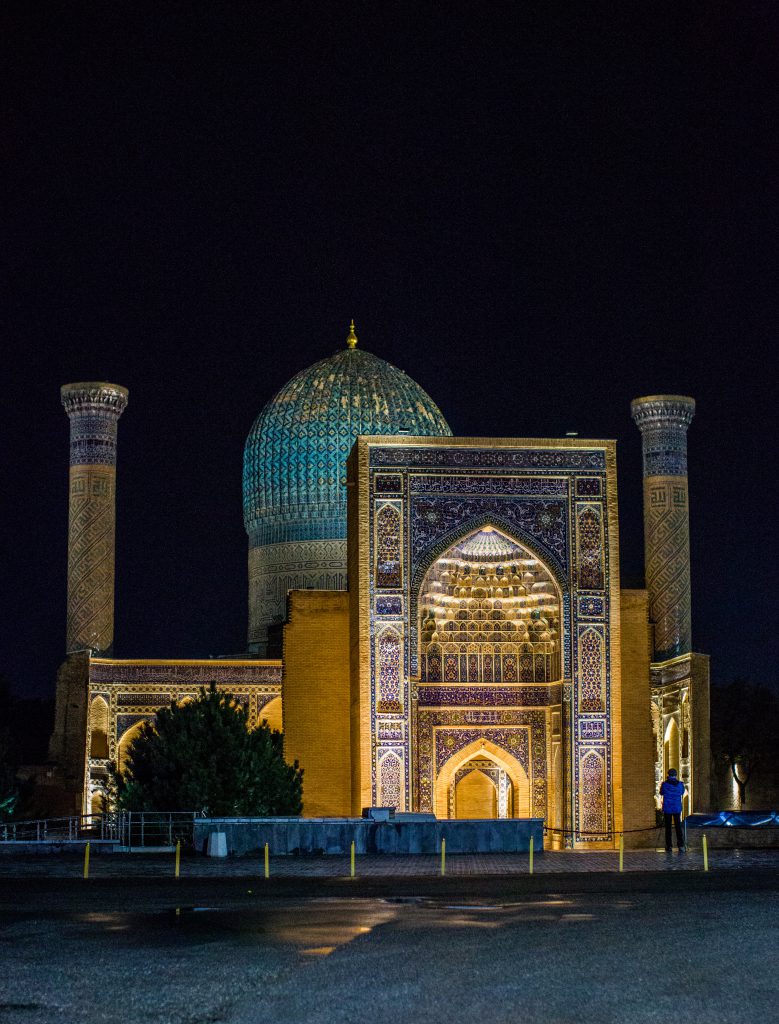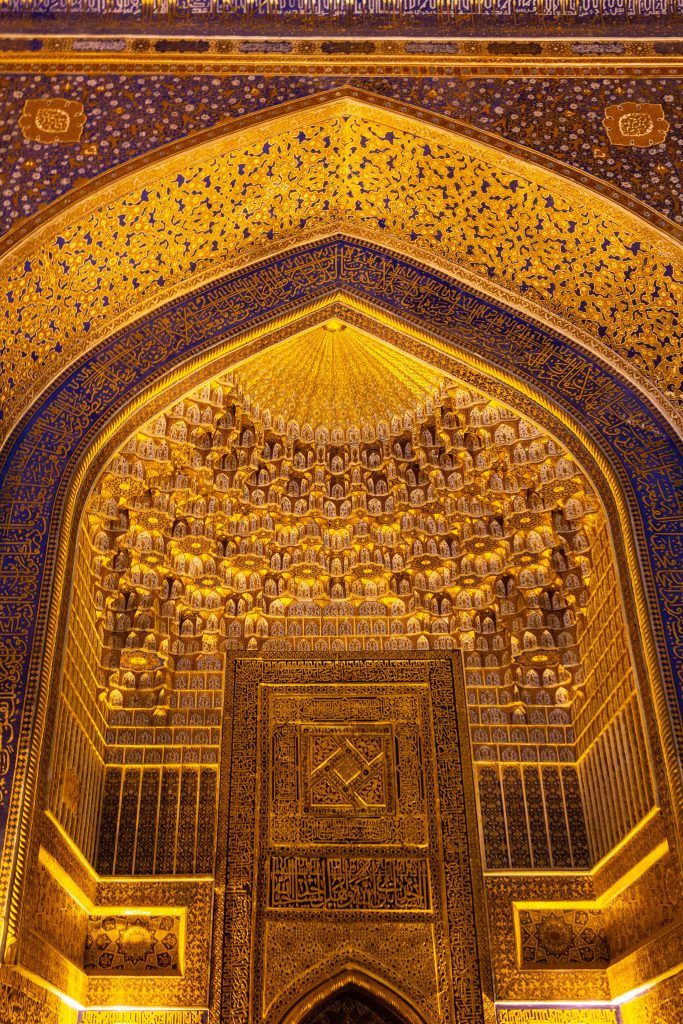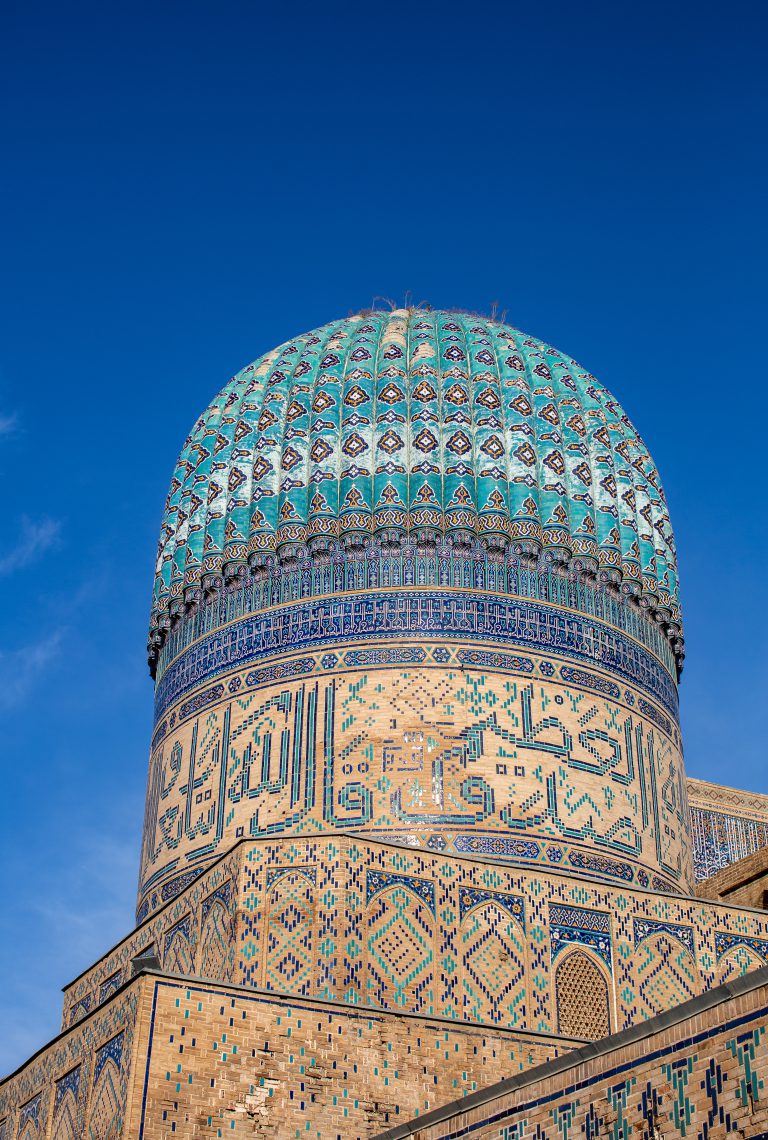Tran Hong Ngoc
On the Silk Road from China to Persia, Uzbekistan was the most important country in Central Asia. This beautiful land witnessed the rise and fall of the world’s mightiest emperors, including Alexander the Great, Genghis Khan, and Emperor Timur. The convergence of major civilizations, and traditional and modern values coupled with some of the world’s finest Islamic architecture make Uzbekistan shine like a gem in the desert.

Samarkand – home to empires
Samarkand amazed me with its architecture. With a history of over two thousand years, its importance rivals that of Rome or Athens. It was recognized by UNESCO as a World Heritage in 2001. From the sixth to 13th centuries, Samarkand was ruled by numerous empires, including those of the Turks, Arabs, Persians, Mongols and Timurid. In 1370, Emperor Timur chose Samarkand as the capital of his empire. During the course of his reign, magnificent works of architecture were built. Samarkand was regarded as the political and cultural center of Asia in the 14th and 15th centuries.

The prosperity and power of the old capital remain intact in Registan Square – the heart of Samarkand. Here, you will find Bibi Khanym – one of the biggest mosques in ancient times, the Shah-i-Zinda necropolis, and Emperor Timur’s mausoleum Gur-e-Amir. No less beautiful are madrasahs, mosques, and museums exhibiting valuable artifacts of the Timurin empire. Together they recreate the glory days of Samarkand.
Registan Square houses three madrasahs: Ulugh Beg, Tilya Kori and Sher-Dor. This architectural complex is a monument of Eastern architecture. Bibi-Khanym Mosque was named after Emperor Timur’s beloved wife. She ordered the mosque’s construction to honor Timur’s victory in India. More than two hundred master architects and builders, and five hundred slaves were mobilized to build this mosque. Elephants transported nearly five hundred stone pillars cut from marble quarries to the city. The cupola of the mosque’s main hall is 41-meters high. It was the biggest mosque of its time.

The facades of Samarkand’s buildings are decorated with a wide range of ceramic tiles painted in sophisticated and vivid patterns, both on the fronts and backs. Key colors include sky blue and turquoise to represent life and yellow to represent the sun.
Dazzling Bukhara
While Samarkand left me stunned, Bukhara had a peaceful and romantic vibe. Bukhara was founded over 2000 years ago . In the 9th and 10th centuries, Bukhara was second only to the Persians’ Baghdad in terms of development and glory. It attracted religious intellectuals and scholars from throughout the Islamic world, who brought their culture and knowledge to this city on the Silk Road. This historic city is the most complete remaining example of an ancient Central Asia city.

Mir-i Arab Madrasah, and Kalyan Minaret are part of Po-i-Kalyan Square, the most outstanding venue in Bukhara. Kalyan Minaret was built completely from baked bricks in the 12th century. Boasting a height of 48 meters, it was the highest minaret in Central Asia at that time. It served as a lighthouse for caravans of merchants on their way to Bukhara. I was most impressed by Abdulaziz Khan Madrasah. Built in the 17th century, it marked a noteworthy development in Central Asian architecture. Its gate is splendid with bright colors. The inside walls and roofs exemplify the peak of almost every decorative technique of that era: relief majolica, marble carving, tile and brick mosaics, murals, and gilding.
I fulfilled my dream of visiting historic cities in the Central Asian part of the Silk Road. Sometimes, I find myself lost in memories of turquoise roofs and madrasah windows. I might have fallen in love with this unique and lovely land.










